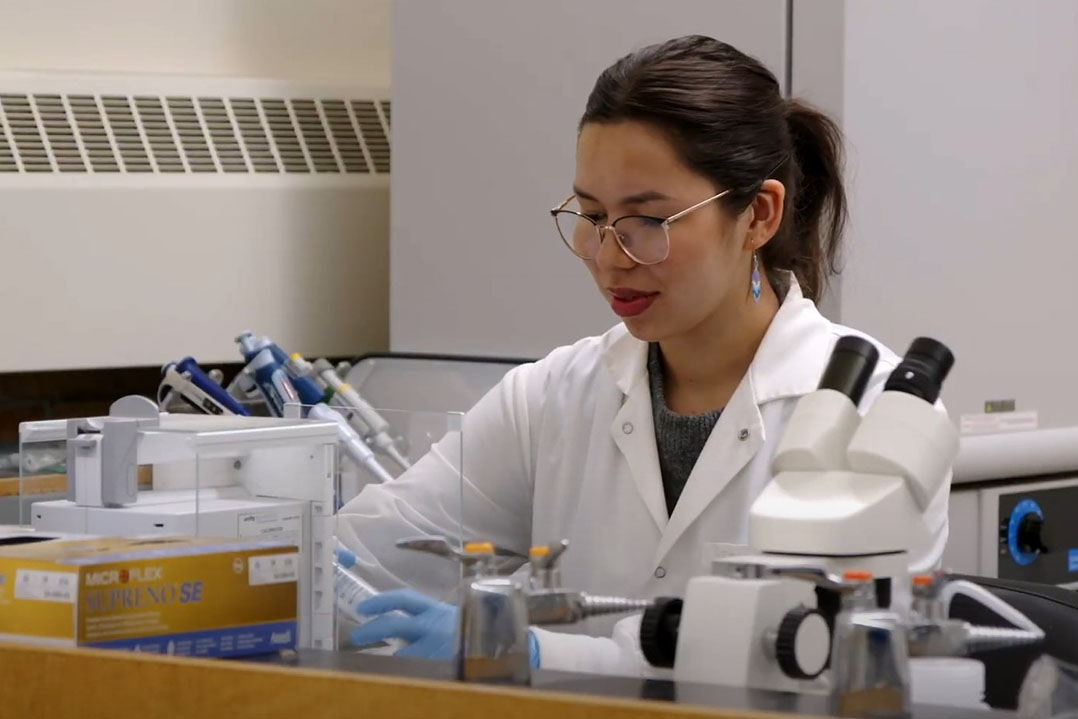
USask undergrad student puts community first in ecological research
Acagos Carriere wants to be known as a water protector.
By Matt Olson, Research Profile and Impact“The environment, taking care of the land, that should be a top priority for everybody,” said the University of Saskatchewan (USask) undergraduate student. “The land is connected to you. It’s all in a circle. If the land is sick, you are sick.”
Carriere is completing a Bachelor of Science degree with a focus on biomedical neuroscience. An Indigenous woman from Cumberland House, Carriere’s interest in the fishing and the water in her home community led her to connect with Dr. Tim Jardine (PhD) at the Toxicology Centre.
Carriere’s research explores water quality in and around Cumberland House, with a focus on testing mercury levels in the fish living in nearby waterways.
Carriere was the inaugural winner of USask’s Undergraduate Research Storytelling Competition. The competition required a pitch explaining her work and her vision for telling her research story through a specially produced video in partnership with USask’s Media Production department.
The storytelling competition is designed to help undergraduate students understand the importance of storytelling as a critical skill for researchers to effectively communicate the impact of their research, scholarly, and artistic work.
The two-minute video was created for the winner of the storytelling competition and includes footage from Carriere’s home and clips of her family and community members, highlighting her personal connection to the work she’s doing.
For Carriere, her interest in water research stemmed directly from her family in Cumberland House. As Carriere puts it, she can remember as a young girl her father and uncle talking about the mercury levels in the water and in fish they caught, and the risks that they carried for consumption.
In a community that has generationally, traditionally, gathered sustainably from the land, Carriere said the talk of high mercury levels has always bothered her.
“There's still ongoing stuff about pregnant women not eating the wild fish and such,” she said. “That doesn’t make sense to me because in my family, through the generations, everything’s been off the land. You go and collect your food. But now you can’t do that.”
She connected with Jardine before coming to USask, while he was doing water sampling work in the area.
A core part of the research Carriere is conducting under Jardine’s supervision includes ethically sourced fish specimens directly from Indigenous fisherman living in or around Cumberland House.
“This is my chance to identify what’s being done wrong, and identify how things can be done better,” Carriere said.
She said she hopes to be an example for other potential Indigenous students to follow the same path as her, and said the video was a great way to show other young people influential research can be led by people from these communities.
“I want people who watch this video to know it’s possible for you to do this, especially if Indigenous students are going to see this,” Carriere said. “In order to fix something, you need to see what’s broken, right?”

